Beautiful gardens are meant to be admired. Flowers and foliage often attract many forms of wildlife, and while some are welcomed with open arms, others become more pests than simple passersby. Deer resistant vines offer plenty of options for keeping deer away and stop them from feasting on your flowers and shrubs.
To be clear, there aren’t actually any plants that are 100% deer-proof. Deer eat nearly anything if their food sources are scarce.
A majority of their time spent browsing for food happens between October and February when the winter kills off their food supply, but that doesn’t stop them from sneaking into your yard in the spring and summer to snack on all your hard work you put in outside in the sun.
Browse this list of deer resistant vines and see which ones would make the perfect addition to your garden.

- Vines that Deter Deer
- A Garden Classic that Deters Deer – Ivy (Hedera helix)
- Viburnum (Viburnum opulus)
- Trumpet Vines (Campsis radicans)
- Japanese Wisteria (Wisteria sinensis) – Stunning Deer Resistant Vines
- Honeysuckle (Lonicera periclymenum)
- Leather Flower (Clematis montana)
- Climbing Hydrangea (Hydrangea petiolaris)- Flowers that Deer Don’t Like
- Peonies (Paeonia lactiflora)
- Butterfly Bush (Buddleia davidii)
- American Bittersweet (Celastrus scandens) – Native Plants that Deer Resist Eating
- Winter Jasmine (Jasminum nudiflorum)
- Creeping Fig (Ficus pumila)
- Colorful Vines that Deer Don’t Eat: Crossvines (Bignonia capreolata)
- Swamp Rose (Rosa palustris)
Vines that Deter Deer
Do you know that saying about how the best defense is a good offense? That phrase is especially true when choosing deer resistant vines to add around your home.
Knowing what deer like and do not like to eat only takes a bit of research and time to keep this wildlife away from your flowers and shrubs. Deer tend to gravitate toward evergreens with narrow leaves.
Some deer also prefer plants with fresh fertilizer. Although there isn’t one plant that deters deer forever, there are plants far less palatable to these furry friends.
Deer typically stay away from poisonous, fragrant, fuzzy, and thorny plants. This information alone is only the beginning of beneficial knowledge about deer resistant plants.
A Garden Classic that Deters Deer – Ivy (Hedera helix)
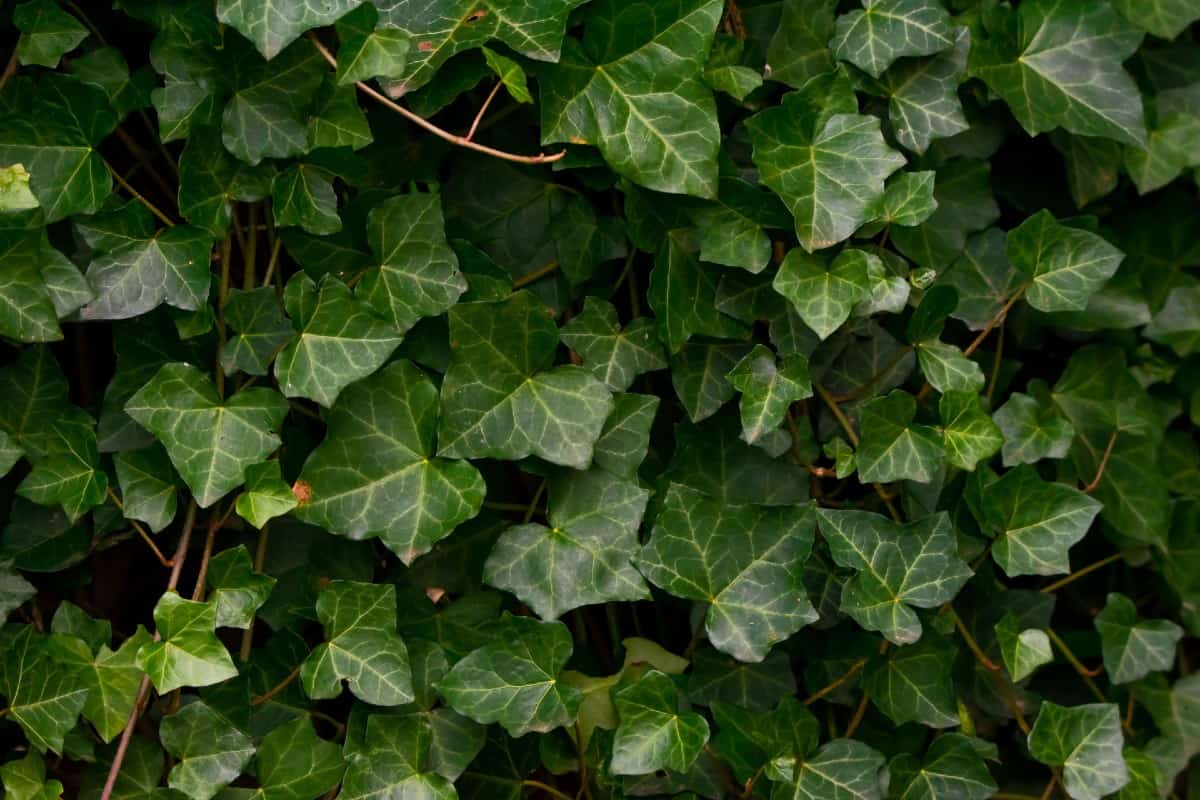
Deer resistant vines include a plant you’ve likely heard of before. Ivy has shiny foliage that grows throughout the entire year. It is exceptionally hardy in USDA zones four through eight.
It adapts to all well-draining soils, even those that range in pH. Adding a layer of organic matter helps support the growth of the vines. Ivy requires regular watering until the plant is fully mature.
Avoid watering the leaves of the ivy to prevent soggy soil and fungal diseases. Trim it two to three times per year or whenever it starts to look shaggy. Ivy is on the invasive species list in some regions, so make sure it doesn’t pose a threat.
Viburnum (Viburnum opulus)
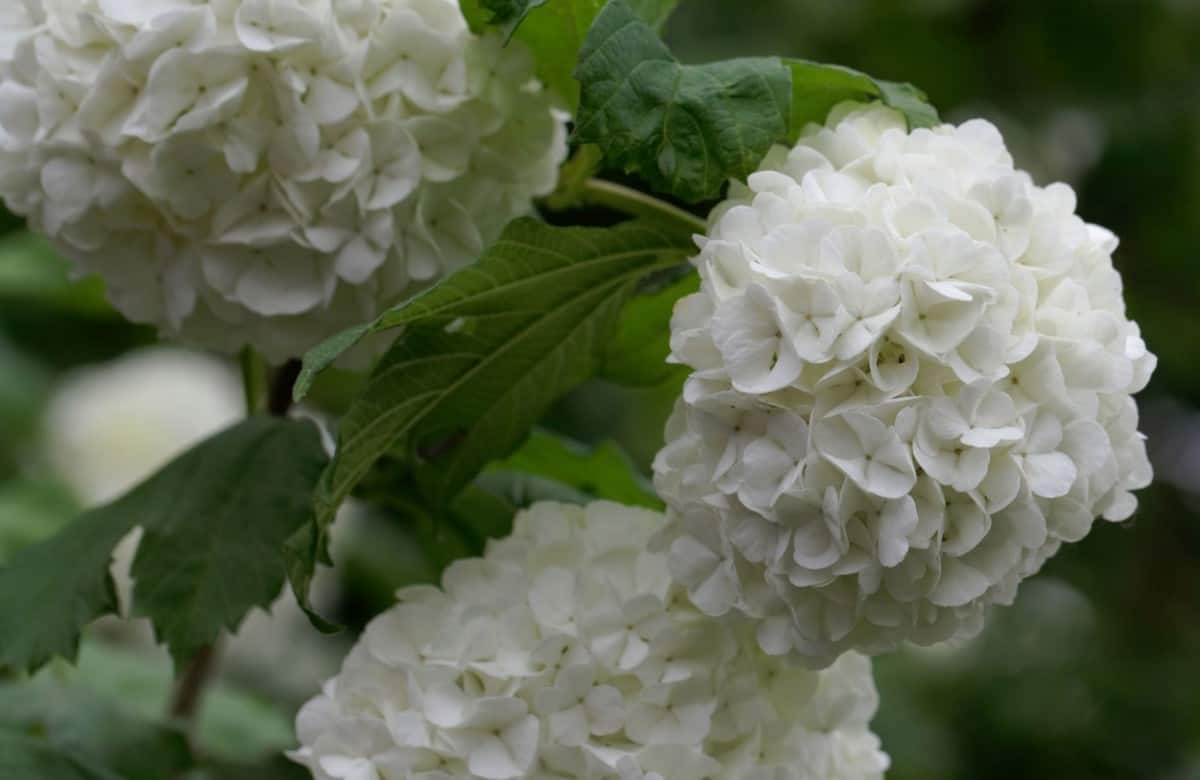
Viburnum is unique compared to a lot of deer resistant plants because it has attractive, dark green foliage, large white clusters of flowers, flashy berries, and a pleasant fragrance. It offers tons of benefits for little work.

This plant isn’t technically a vine, but this flowering shrub has varieties that reach sizes of 20 feet. If that isn’t enough deer resistance, we don’t know what is. Most viburnums prefer full sun, while also tolerating partial shade.
Depending on the mature size, space each plant five to 15 feet apart. Water them regularly during dry periods and add mulch around the plant to help retain soil moisture. Prune dead or broken branches throughout the growing season.
Trumpet Vines (Campsis radicans)
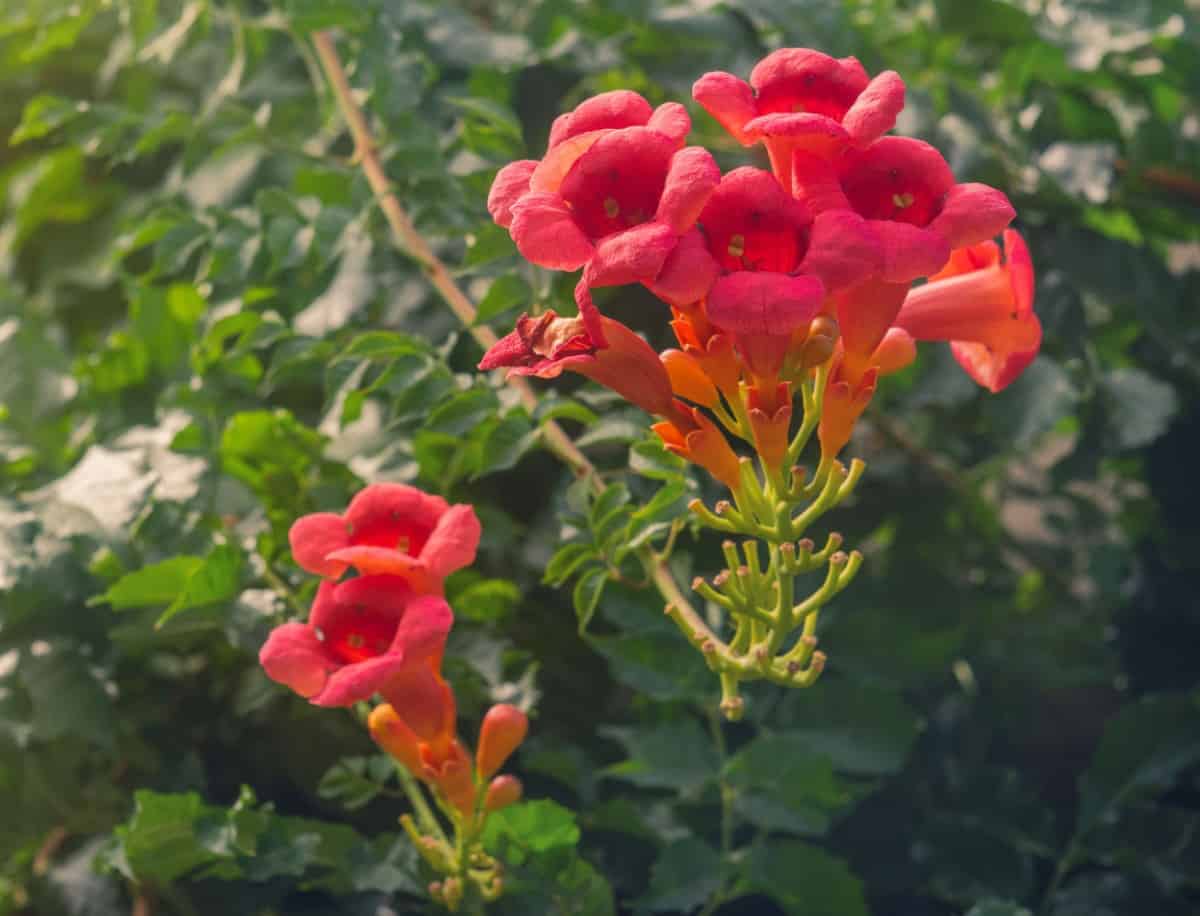
Trumpet vines are aggressive flowering vines with built-in deer resistance. The bright orange flowers attract hummingbirds as well. Growing this plant takes caution because it self-seeds and forms thickets that choke out surrounding plants if not properly maintained.
This natural deer deterrent vine has dark green leaves that turn yellow in the fall. The trumpet-shaped flowers turn orange, red, and yellow that change to six-inch-long seed pods.
This vine covers fences, trellises, and walls quickly or works as groundcovers on rock beds and other areas that homeowners wish to remain unseen. They thrive in well-draining soil and full sun to partial shade.
Japanese Wisteria (Wisteria sinensis) – Stunning Deer Resistant Vines
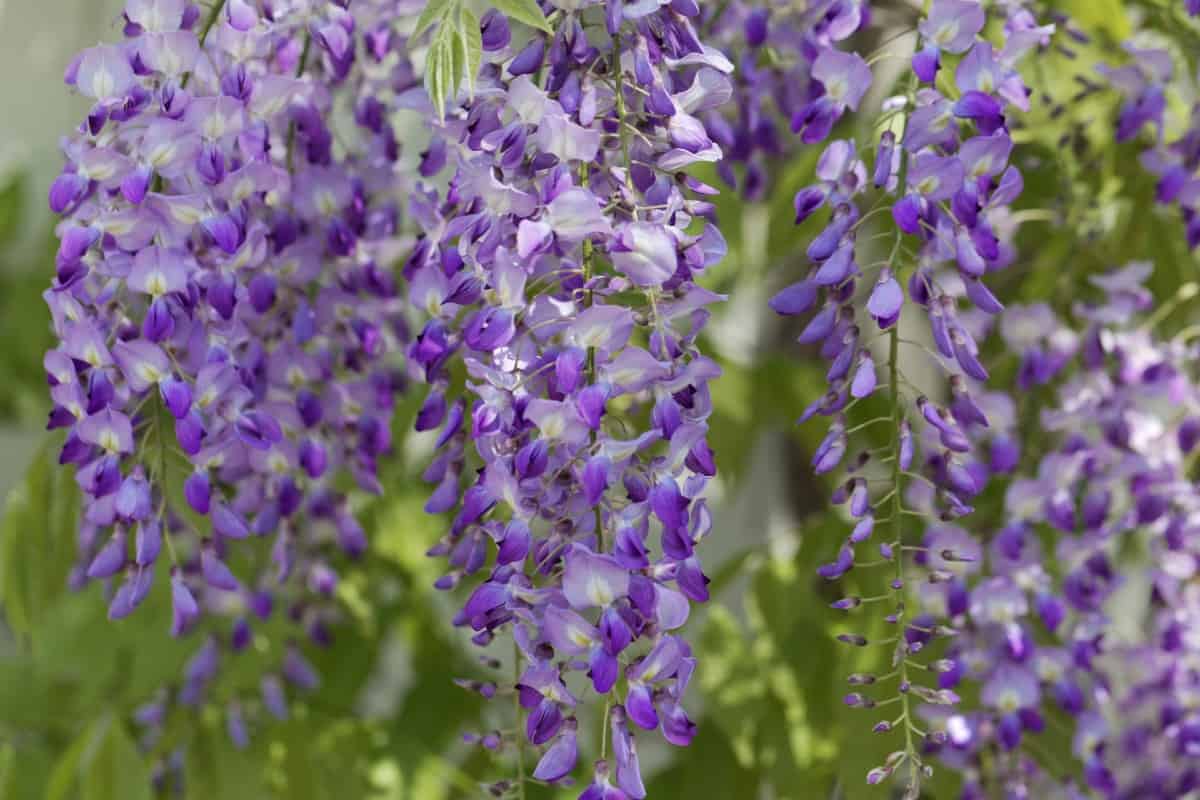
One of the best deer resistant plants includes wisteria vines. Wisteria produces a sweet aroma and has stunning white, lavender, and blue flowers in the mid to late spring.
These climbing flowering vines are a twining vine that requires support to grow up and regular pruning to ensure it doesn’t overspread. Wisteria doesn’t enjoy the cold, so plant it in full sun and fertile, moist soil. It is an aggressive grower, so don’t add fertilizer or compost to the ground.
Wisteria vines may also require training that makes them easier to control. To train it, choose an upright stem and attach it to a support system. Remove side shoots and train new branches when necessary.
Honeysuckle (Lonicera periclymenum)
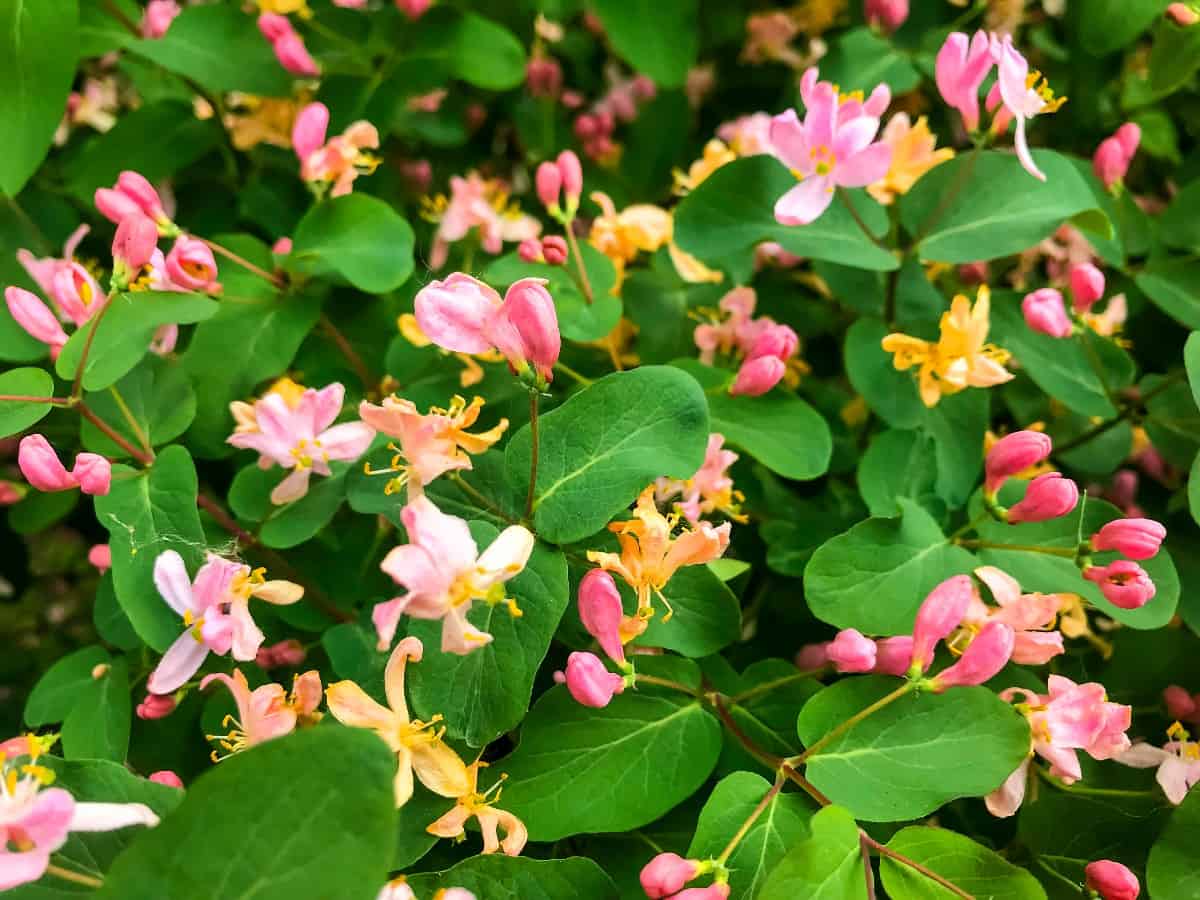
Another favorite of the deer-resistant perennials is the honeysuckle vine. They have a sweet scent and even sugary nectar that draws pollinators to its red and yellow flowers. Honeysuckle grows in nearly every American state with over 180 varieties to choose from.
Honeysuckle prefers full sun but tolerates part shade as well. It also adapts to nearly all soil types, although it likes well-draining soil with added organic matter best.
Prune them regularly, especially when using as groundcovers. With a little bit of care, honeysuckle happily returns every year and adds interest to your flower beds and trellises.
Leather Flower (Clematis montana)
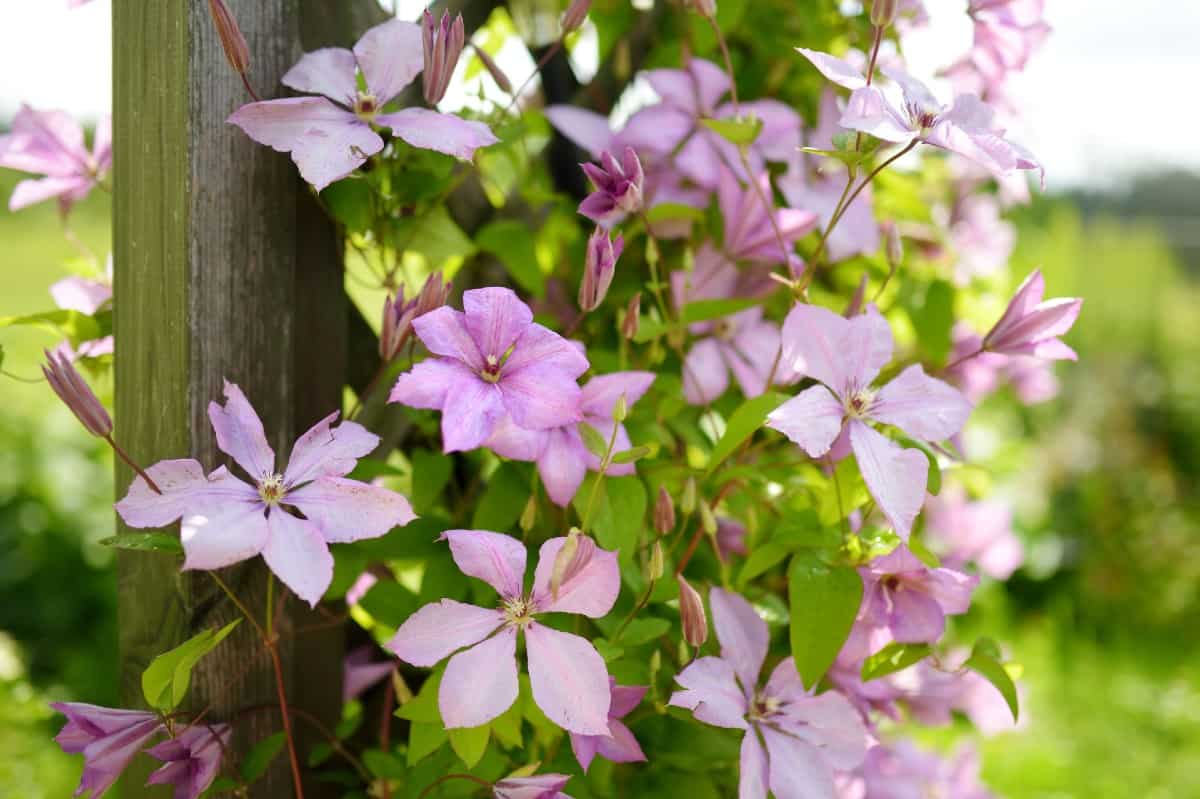
Leather flowers are deer proof climbing plants with diverse bloom shapes and colors. The clematis plants are sturdy and low maintenance. Small and subtle flowers are abundant and vanilla-scented.
Leather flowers are fast growing vine plants that easily climb structures. The plant reaches up to 40 feet long and spreads as wide as 15 feet without pruning.
Blooms begin in the late spring and early summer. They are hardy in growing zones six through nine and even survive occasional freezing temperatures.
Climbing Hydrangea (Hydrangea petiolaris)- Flowers that Deer Don’t Like
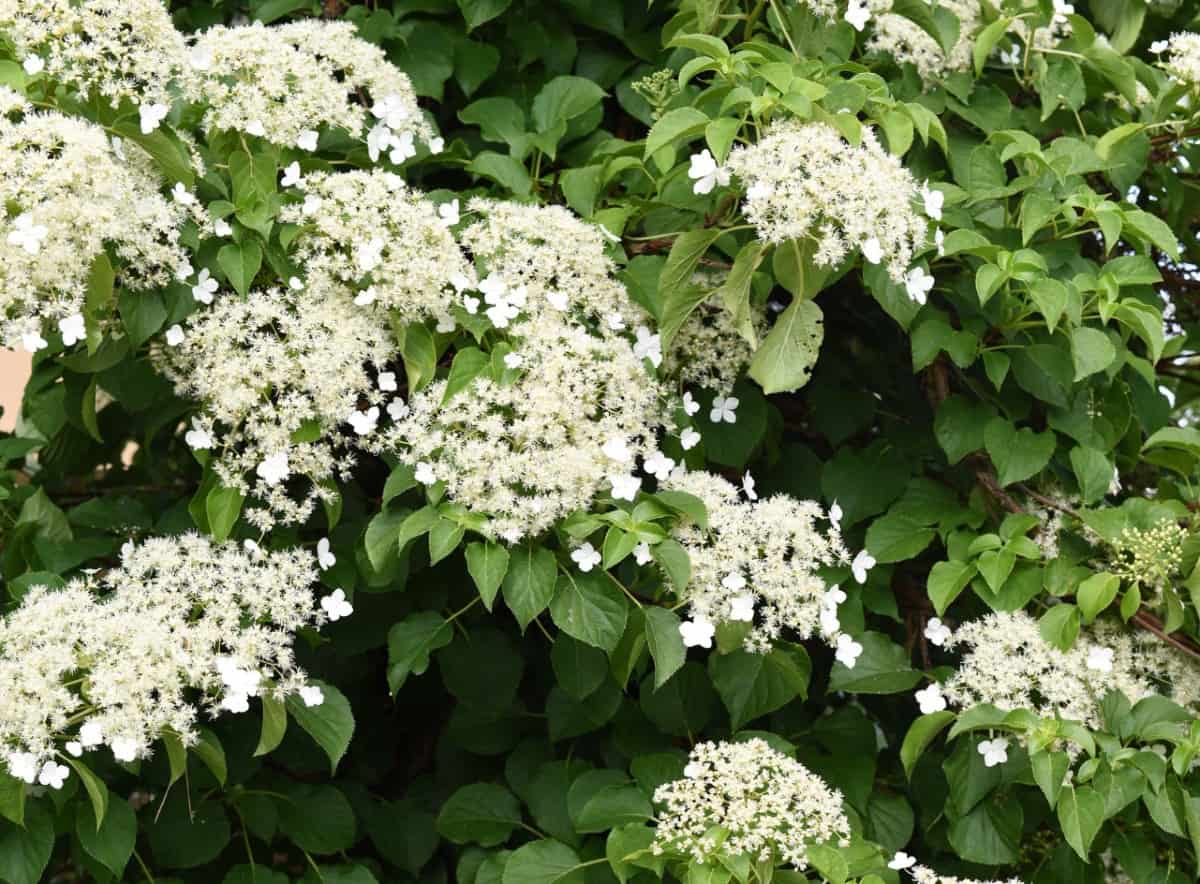
Hydrangeas are often thought of as large shrubs, but there is another variety of the plant called a climbing hydrangea. These vines feature large clusters of fragrant, white flowers and heart-shaped leaves.
These giants grow from 30 to 80 feet tall but tolerate pruning to even lower heights. Climbing hydrangeas are heavy vines that require sturdy support.
They are hardy in USDA zones five through seven and enjoy fertile, moist soil. Adding compost to the ground when planting helps them grow and bloom more beautifully.
Peonies (Paeonia lactiflora)
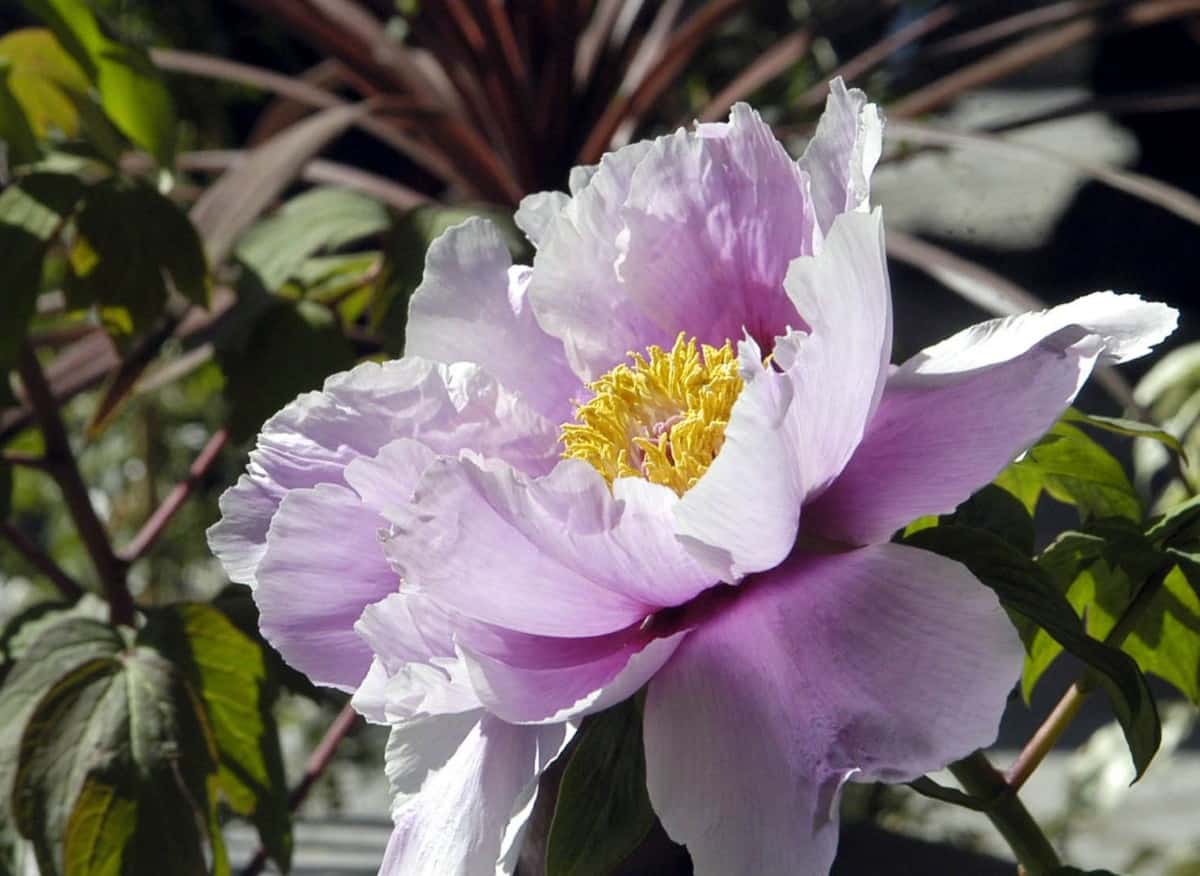
Peonies may be a bush, but they are known for their deer resistance and eye-catching blooms. They are so hardy that they are known for surviving zone two winters that reach nearly -50°F.
If given the proper growing conditions, peonies are deer tolerant shrubs that bloom for over 100 years with minimal care. Peonies prefer sunny locations and well-draining soil.
This plant is most prone to a fungal disease called botrytis that causes the leaves and stems to turn black and rot. Easily avoid this by planting them in the proper location.
Butterfly Bush (Buddleia davidii)
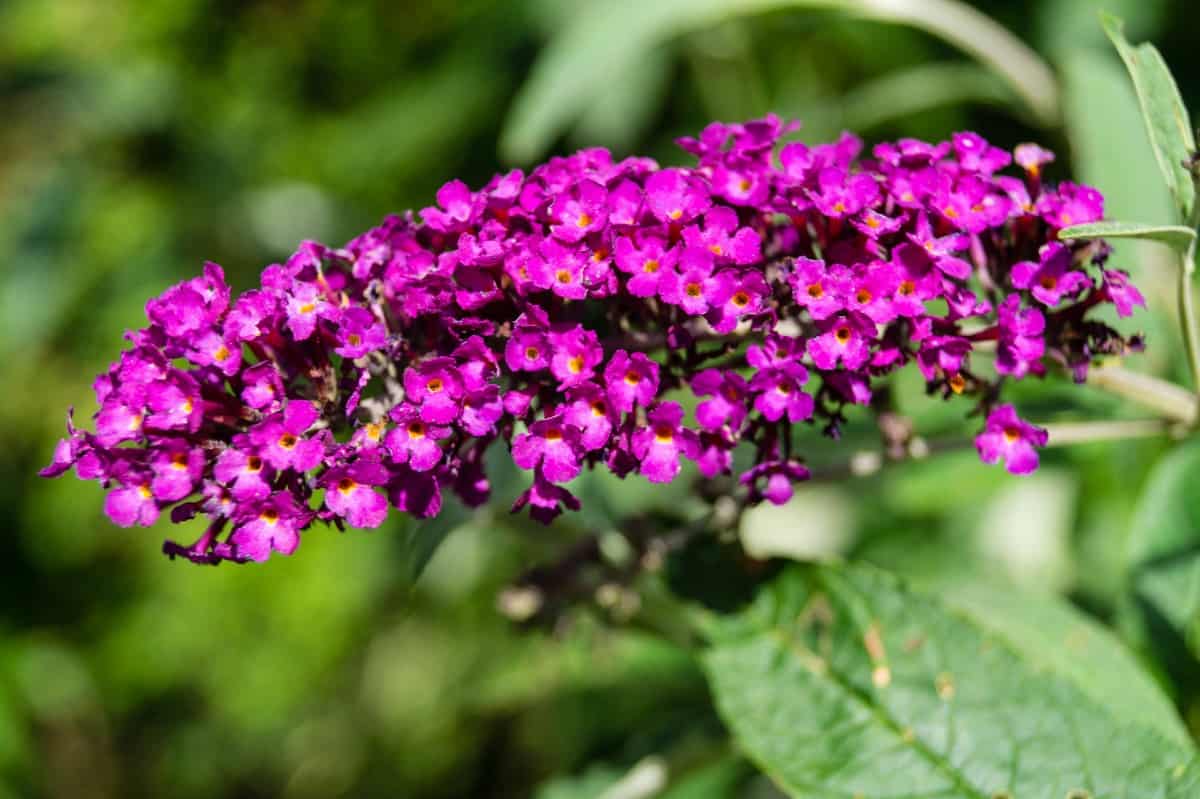
Butterfly bushes are perennials that attract all the useful animals to your yard and keep the bad ones away. Butterflies, bees, and hummingbirds all love this plant without attracting deer to your yard.
Panicles of colorful flowers that bloom from spring to summer and the evergreen foliage provide year-round color. It is hardy in zones two through nine. A butterfly bush placed in the right spot requires far less work than one in a poor location.
Place each bush of flowers deer won’t eat in an area with full sun or partial shade. Ensure that the soil is well-draining or you risk root rot. Allow the butterfly bush plenty of room from other plants. They grow from six to 12 feet high and four to 15 feet wide.
American Bittersweet (Celastrus scandens) – Native Plants that Deer Resist Eating
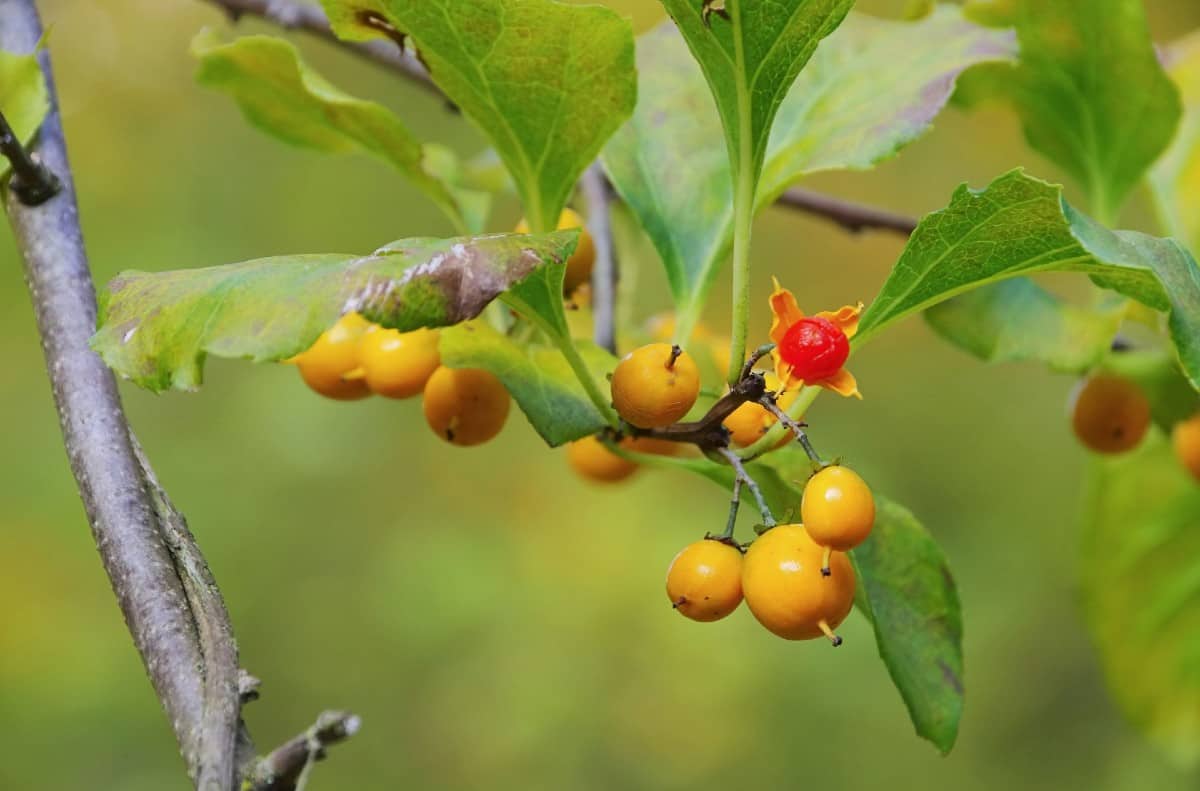
Bittersweet vines are a native plant to North America and thrive throughout all of the United States. Find them in the wild along rocky slopes and woodland areas.
This vine winds itself around trees and shrubs but makes an excellent addition to a fence or other supportive structures. American bittersweet is a perennial vine growing up to 20 feet tall.
It has yellow-green blooms in the spring followed by orange, yellow, and red berries that make a statement throughout the fall. To get the attractive berries, you must have a male and female plant.
Bittersweets thrive in areas with full sun and tolerate all soil types. They even survive as vines for poor soil conditions. Water them during a dry spell, and this vine will be one happy camper.
Winter Jasmine (Jasminum nudiflorum)
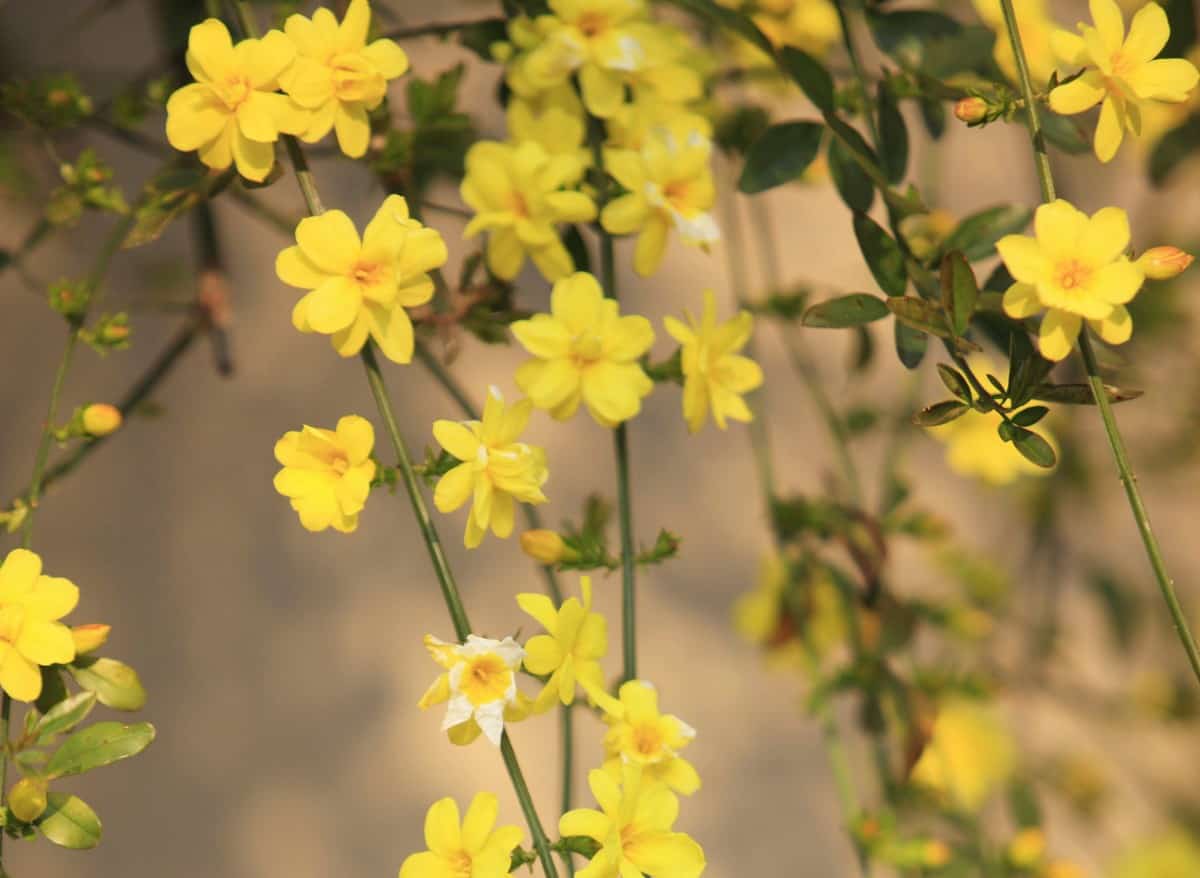
Winter jasmine blooms very early in the growing season, often in January. The butter-colored, star-shaped flowers bring cheer in the gloom of winter, and the plant quickly establishes itself.
This plant scatters itself over structures and plants and uses them for support. The green leaves are glossy and deciduous. Plant winter jasmine in well-draining soil and full sun.
It doesn’t require extra compost or fertilizers to help it grow, although it may be beneficial. Jasmine needs moisture, especially during the heat of the summer. Adding mulch to the base of the plant helps retain moisture and prevents weeds from popping up.
Creeping Fig (Ficus pumila)
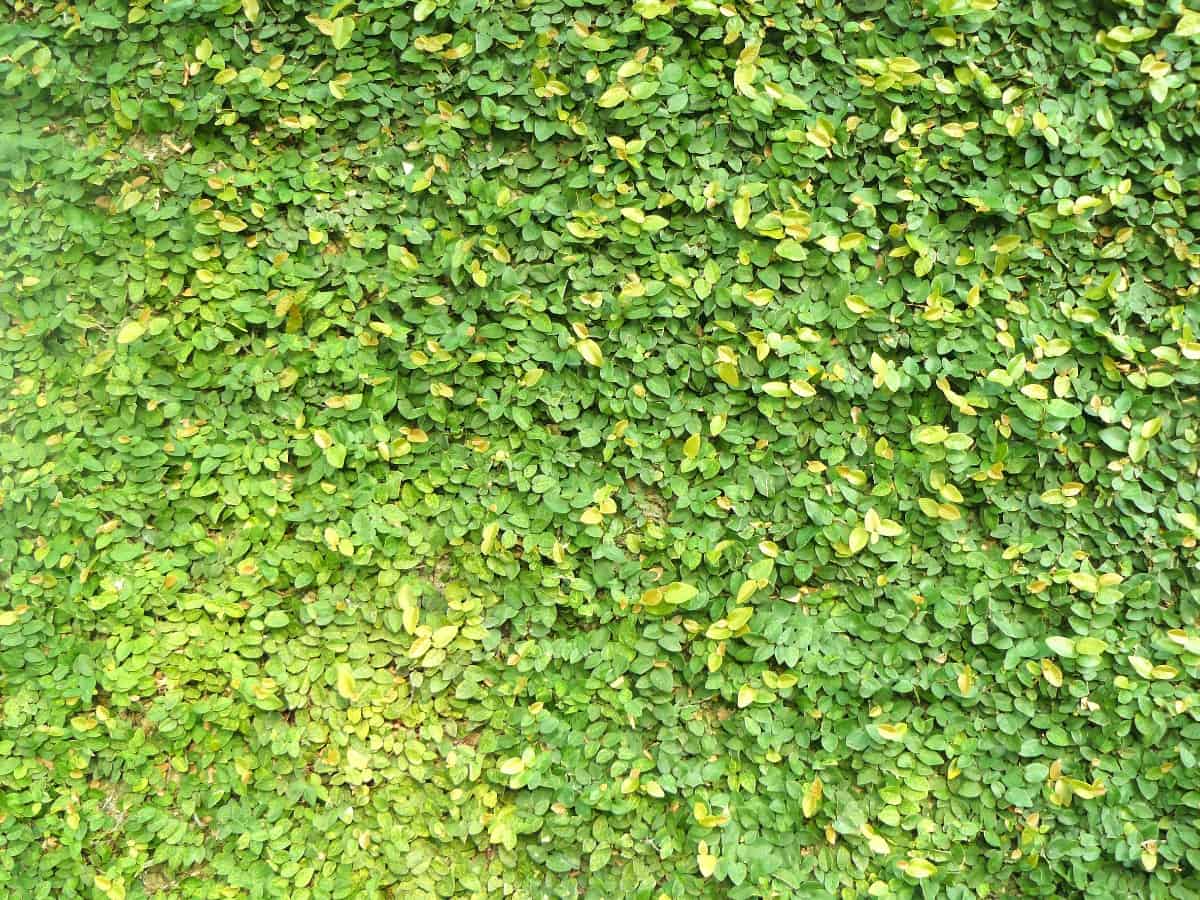
Creeping fig, also called fig ivy, is another widespread plant of the deer resistant vines. The downside is that it is only hardy for outdoor gardening in zones eight and higher.
If you live in that region and are looking for a vine to keep deer away, consider yourself lucky. Creeping fig grows up to 20 feet tall and has dense foliage of leathery, dark green leaves. It likes locations with full or part shade and well-draining soil.
Two inches of water every week is necessary, so it may take regular watering to get it established. Prune the vine back as much as you desire once you notice that the leaves start to die.
Colorful Vines that Deer Don’t Eat: Crossvines (Bignonia capreolata)
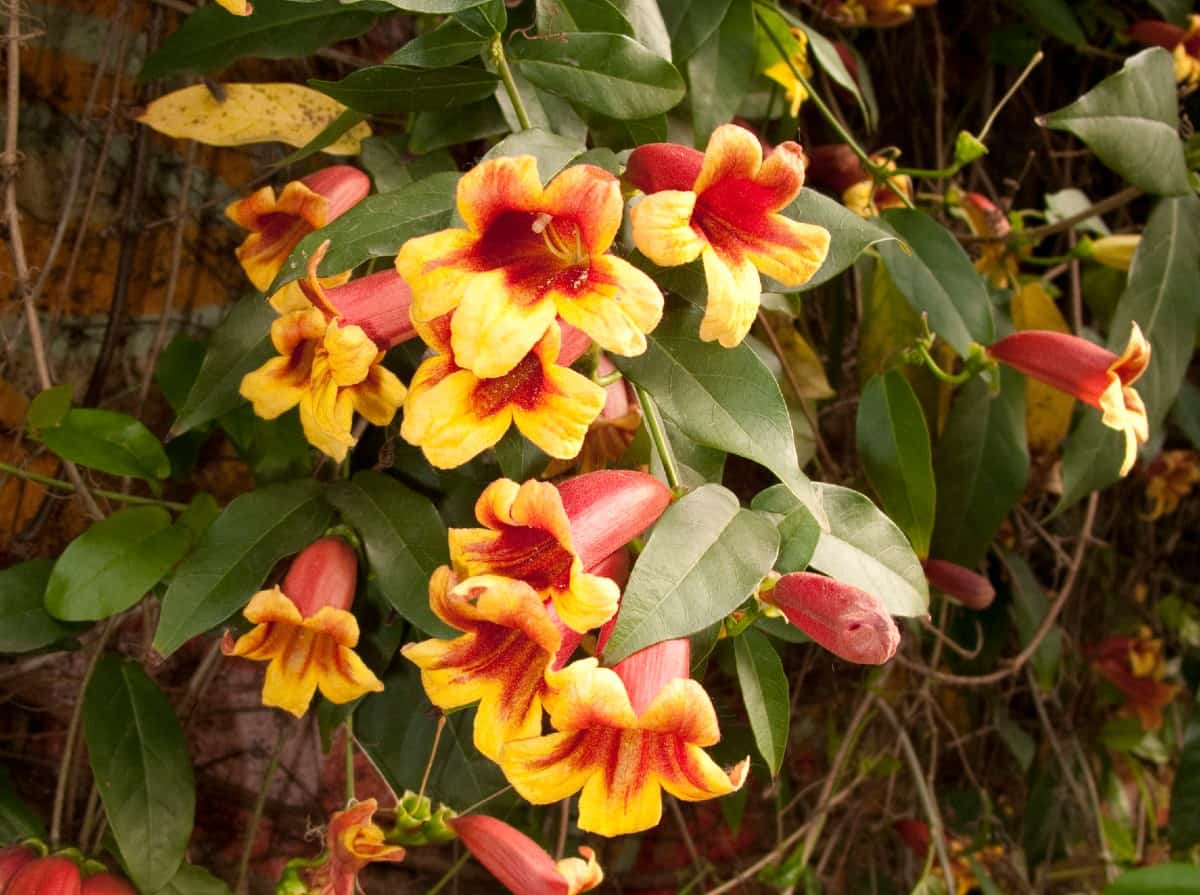
You’ve probably heard crossvine frequently called bignonia crossvine. This perennial vine enjoys scaling walls as high as 50 feet with its claw-shaped tendrils that grip onto surrounding supports.
Orange and yellow trumpet-shaped flowers are eye-catching in the early spring and last up to four weeks long. Crossvines are native to the United States and used for medicinal purposes.
They prefer slightly acidic soil and full sun. Crossvine is hugely pest and disease resistant and makes an attractive, low maintenance plant perfect for deterring deer.
Swamp Rose (Rosa palustris)
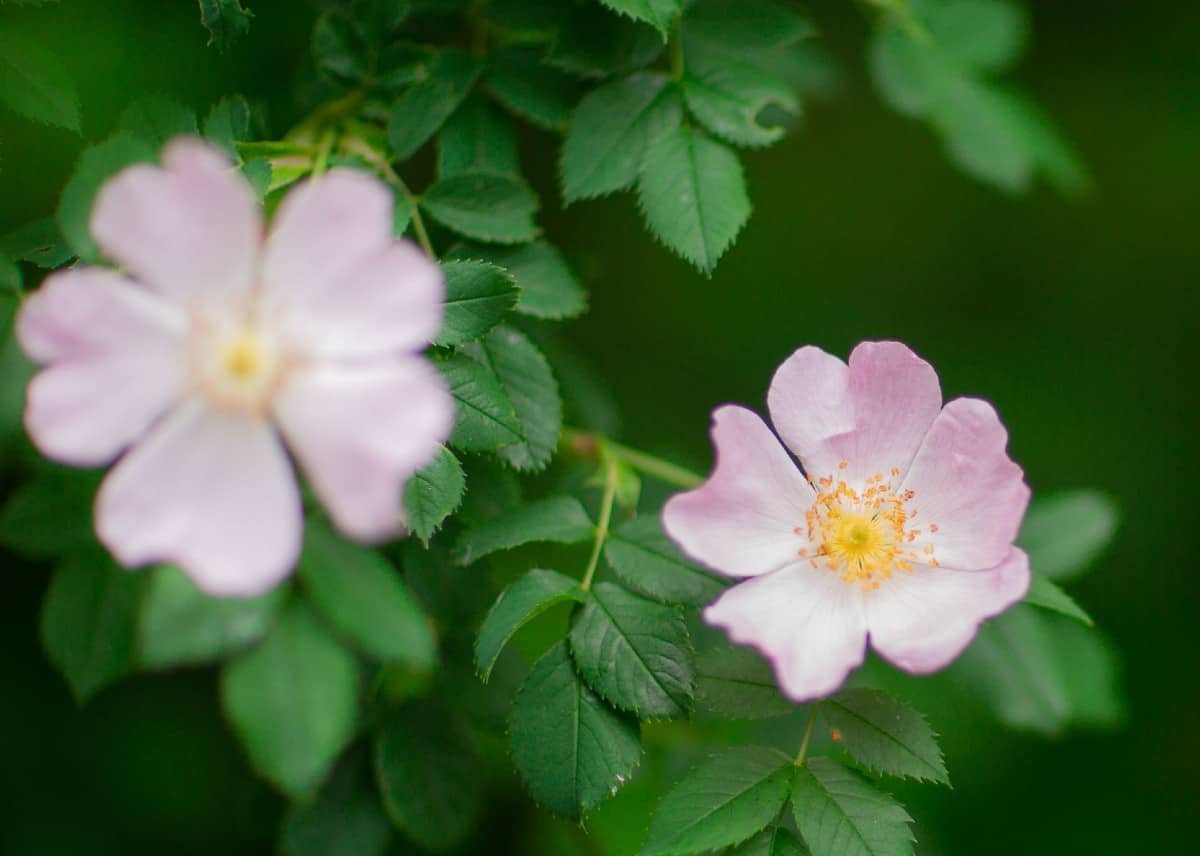
Swamp rose is another vine used to deter deer. It has rosy-pink flowers, arching foliage, and a mild scent. It is famous for its disease resistance and lack of thorns. It thrives along with areas with bogs, marshes, and other waterways.
Plant swamp rose in moist and fertile soil. It tolerates partial shade or full sun and appreciates good air circulation. Remove dead leaves to prevent diseases and lightly prune it by one-third at the end of the fall or the beginning of spring.
There is nothing more heartbreaking than walking out into your garden and discovering that the wildlife around your home has made themselves a midnight snack from your flowers and shrubs.
Deer may be fun to watch from afar, but keeping them out of your yard is sometimes tough for gardeners of all experience and skill levels.
Having the right information about deer resistant vines is essential in maintaining beautiful, healthy plants in and around your garden beds.
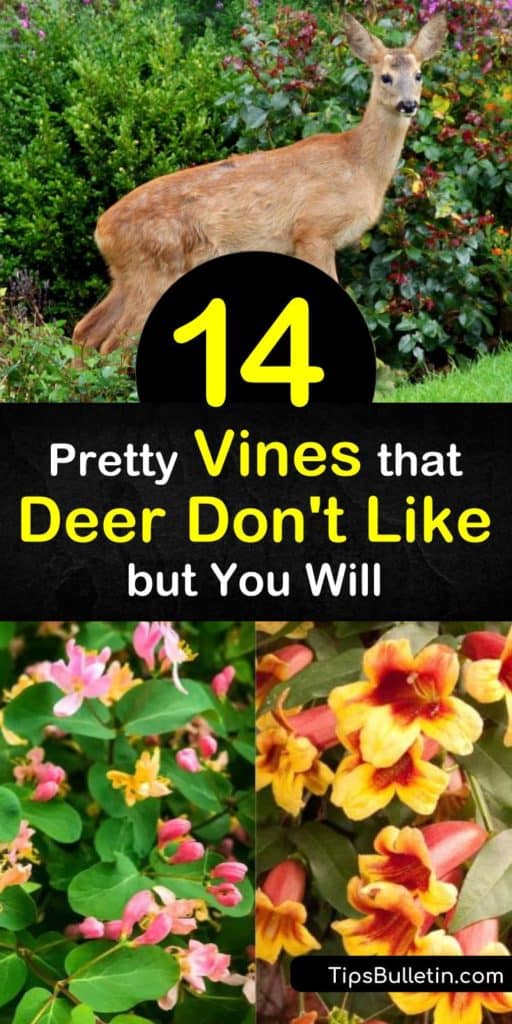
If these deer resistant vines are successful around your landscaping, try sharing these plants that deer don’t like eating on Facebook and Pinterest.